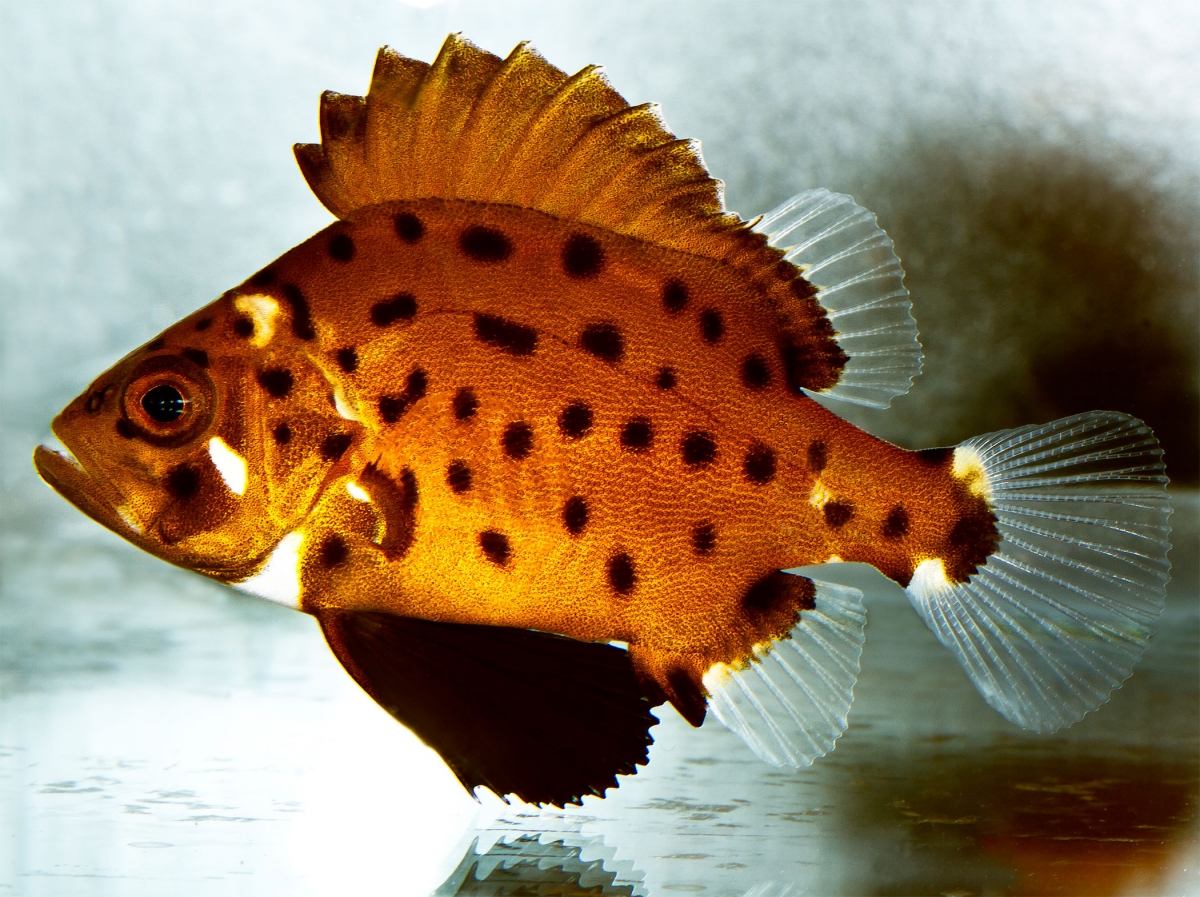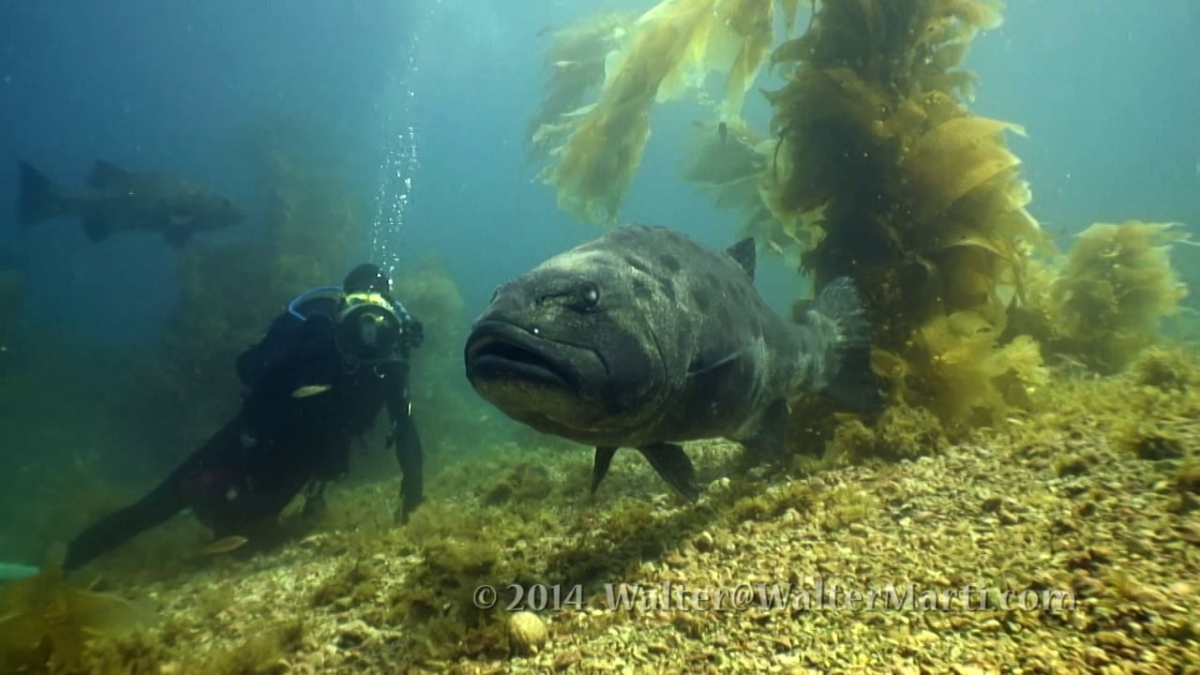We’ve Got a (Baby) Giant Black Sea Bass!
January 19, 2016 — Aquarium Outreach Manager Randi Parent can’t hide her soft spot for her newest officemate: Our baby giant black sea bass!
“Baby giant” seems like a contradiction in terms, but when it comes to the latest fish on exhibit at our Santa Monica Pier Aquarium, it is accurate. Under a year old and just shy of two inches long, our giant black sea bass, Stereolepis gigas, has a long way to go to live up to its name. But when it reaches maturity at between 13-15 years of age, this critically endangered species can reach seven feet in length and weigh upward of 500 pounds. It’s hard to equate this tiny, brownish-orange fish with oversized fins and dark spots with the much darker gentle giants (one diver’s blog refers to them as “aquatic Volkswagens”) that hang out in groups around kelp beds just off the coast, but they really are the same species.
Giant black sea bass are also described as so chill a diver can hand feed them – a trait that meant they were nearly fished to extinction by the late 1970’s. In 1982 the sport fishing of these big lugs was banned and a few years later gill netting of the species was also outlawed. Now, marine biologists are working to determine the success of these protections, and our Aquarium’s baby giant black sea bass is part of this unfolding story of wildlife conservation.
When researchers from Cal State Northridge and the Monterey Bay Aquarium approached senior aquarist José Bacallao about holding on to one of a handful of babies collected recently along the Southern California coast, he jumped at the chance. It turned out the researchers were “tipped off” by biologist and photographer Michael Couffer, who made an unannounced, stealth visit to the Aquarium the previous week to determine whether we were baby giant sea bass-worthy. And naturally, we were!
Couffer will return each month to chronicle the fish’s growth, also recording any changes in its color scheme–paying particular attention to its dark spots. Are they unique markers? Can these spots be used to identify a particular giant sea bass throughout its life? The goal is to record a full life history of these giant fish and show the importance of conservation in preserving the species. Couffer can discuss at length the spawning habits of the adults, coloration changes and behavior of the juveniles along the sandy bottom in the most scientific terms. But even a seasoned biologist had to resort to an unscientific, one-word description of our newest fish: cute.
You can visit this adorable fish at the Aquarium Tuesday-Friday from 2-5pm, and weekends from 12:30-5. Count its spots and watch for updates!
| From this… | To this! |
 |
 |



